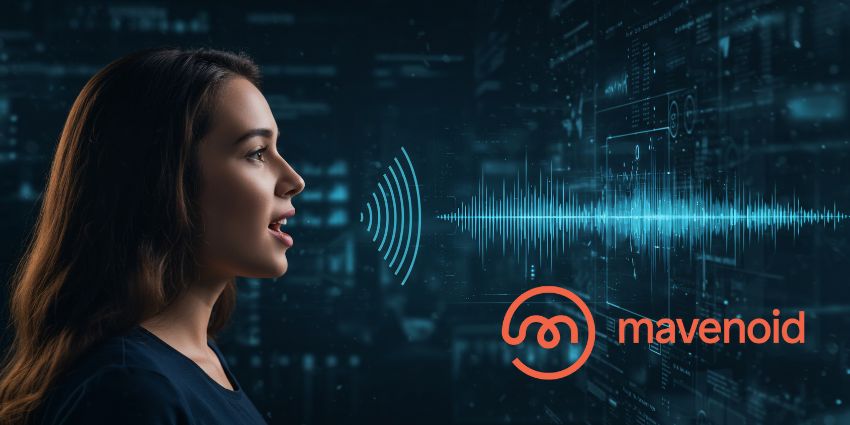Voice automation support has always had promise.
It’s immediate, familiar, and doesn’t require the customer to fumble about with logins or apps.
But it’s been stuck doing the basics for years: routing calls, repeating FAQs, and asking customers to ‘press 1 for billing.’
Now, a new generation of automation tools is pushing voice into more capable territory.
Mavenoid, a company best known for support automation in the hardware and product space, is among those leading the shift.
The company’s Voice Assist product doesn’t just route; it resolves.
“We’ve had people talk to our voice automation system for 40 minutes,” says Gintautas Miliauskas, Mavenoid CEO and Co-Founder.
You don’t stay on a call that long unless it’s actually helping. This isn’t just call deflection; it’s problem-solving.
Voice Is Back, And It’s Smarter
Until recently, voice automation had hit something of a ceiling.
Speech-to-text was unreliable, and anything beyond basic menu options tended to fall apart.
Customers would get stuck in loops, grow frustrated, and hammer the zero key to reach a human. More often than not, a few choice words were even thrown in for good measure.
But that’s changing fast.
For Miliauskas, it really boils down to getting two key things right: speech recognition and dialogue handling.
He explained how both had improved dramatically, with word error rates in English currently down to around three percent, and large language models being deployed to help smooth over mistakes.
This has resulted in a voice experience that understands context, handles ambiguity, and responds in natural conversation.
Moreover, it can actually follow through, as the Mavenoid CEO explained:
When you’re just running shallow scripts, you can only redirect. But when your system has real domain knowledge, that’s when you start seeing resolution.
From Call Avoidance to Real Resolution
Many automation projects still treat voice as a cost to be minimized.
The goal is to deflect as many tickets as possible, often by encouraging customers to hang up and use a chatbot instead, but that’s not how Mavenoid sees it.
“The opportunity here is to improve quality and reduce cost at the same time,” says Miliauskas.
“You let automation handle the structured, repetitive parts, and your agents are freed up to have the meaningful, complex conversations they’re actually good at.”
And these aren’t empty promises from Miliauskas; his company’s tech is already having an impact for the likes of De’Longhi, Husqvarna, and Stanley Black & Decker.
Another company that Mavenoid is currently working with is electronics brand Broan-NuTone, where Voice Assist has helped to slash average handling time from 10.9 minutes to just two – a 75% reduction.
That kind of efficiency doesn’t just save money; it opens doors.
Miliauskas detailed how the tech is not only helping with cost reduction, but it’s also “driving revenue opportunity.
Because [when] customers aren’t waiting and agents aren’t buried in admin, there’s more space for upselling and value-add conversations.
Voice That Knows What You Mean
Part of what makes Voice Assist effective is its ability to route and resolve based on actual context, not just static menu trees.
This has been a longstanding complaint of voice automation, as Miliauskas explains:
“If your device is on fire, pressing 1 for ‘hardware issues’ doesn’t cut it.
“Mavenoid uses intent detection and multimodal tools to work out the best interface for the problem, whether that’s voice only, visual guidance, or escalation to a human.”
That flexibility means support journeys can be tailored in real-time.
While a simple order query might stay within voice, the system knows when to hand things off, such as urgent scenarios or instances involving warranty claims that might necessitate uploading receipts.
And crucially, customers are sticking with it.
“We used to hear concerns that people would always ask for a human,” says Miliauskas.
But the reality is, people want their problems solved. If the automation works, and works quickly, they’ll use it.
“Engagement rates are already in the 70–80% range in many sectors, and we expect that to grow.”
Rethinking the Role of Voice
Like vinyl, flip phones, and mullets, voice channels are having something of a resurgence amongst the younger generation.
“Gen Z was once considered voice-averse, but now they’re using voice notes, ChatGPT’s voice interface, all of it,” explains Goodsell, “we’re seeing that preference swing back.”
Voice has always been important, but with the youth embracing it more and more, companies really cannot afford to ignore this crucial customer service and experience channel.
With AI-powered tools like Voice Assist in the mix, voice can do more than patch up customer complaints; it can become part of a more cohesive, responsive CX strategy that reduces friction and drives revenue.
“There’s a broader trend happening,” says Miliauskas.
“Support is no longer just about cost savings. It’s about customer relationships.
“When the experience is seamless, fast, and intelligent, it becomes a touchpoint for loyalty and conversion.”
And in that context, IVRs and legacy voice trees start to look prehistoric.
“They’re going the way of the dodo,” Miliauskas quips.
We’re finally getting to a point where the technology adapts to the customer, not the other way around.
You can find out more about Mavenoid and its full suite of solutions and services by visiting the website today.







